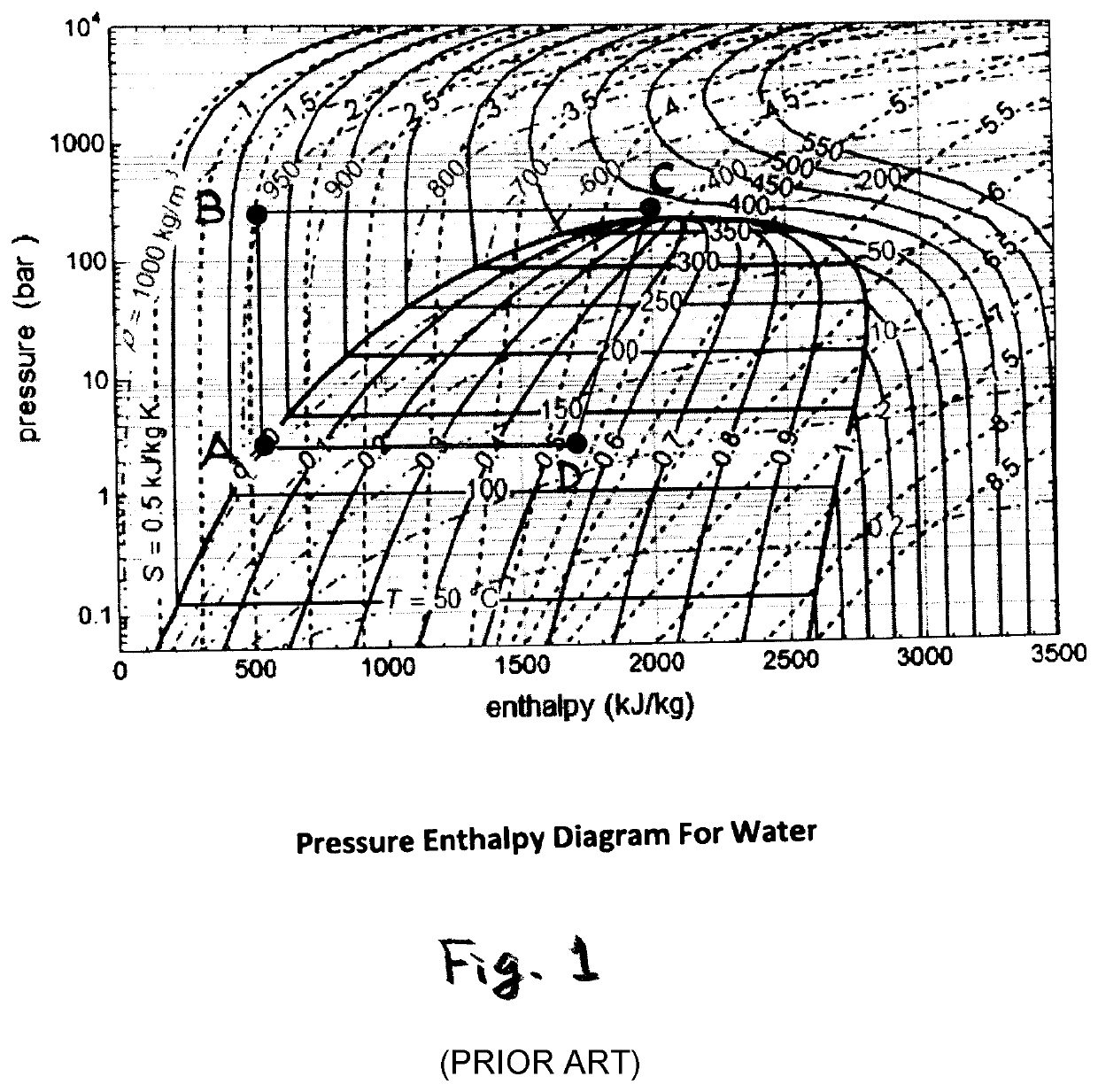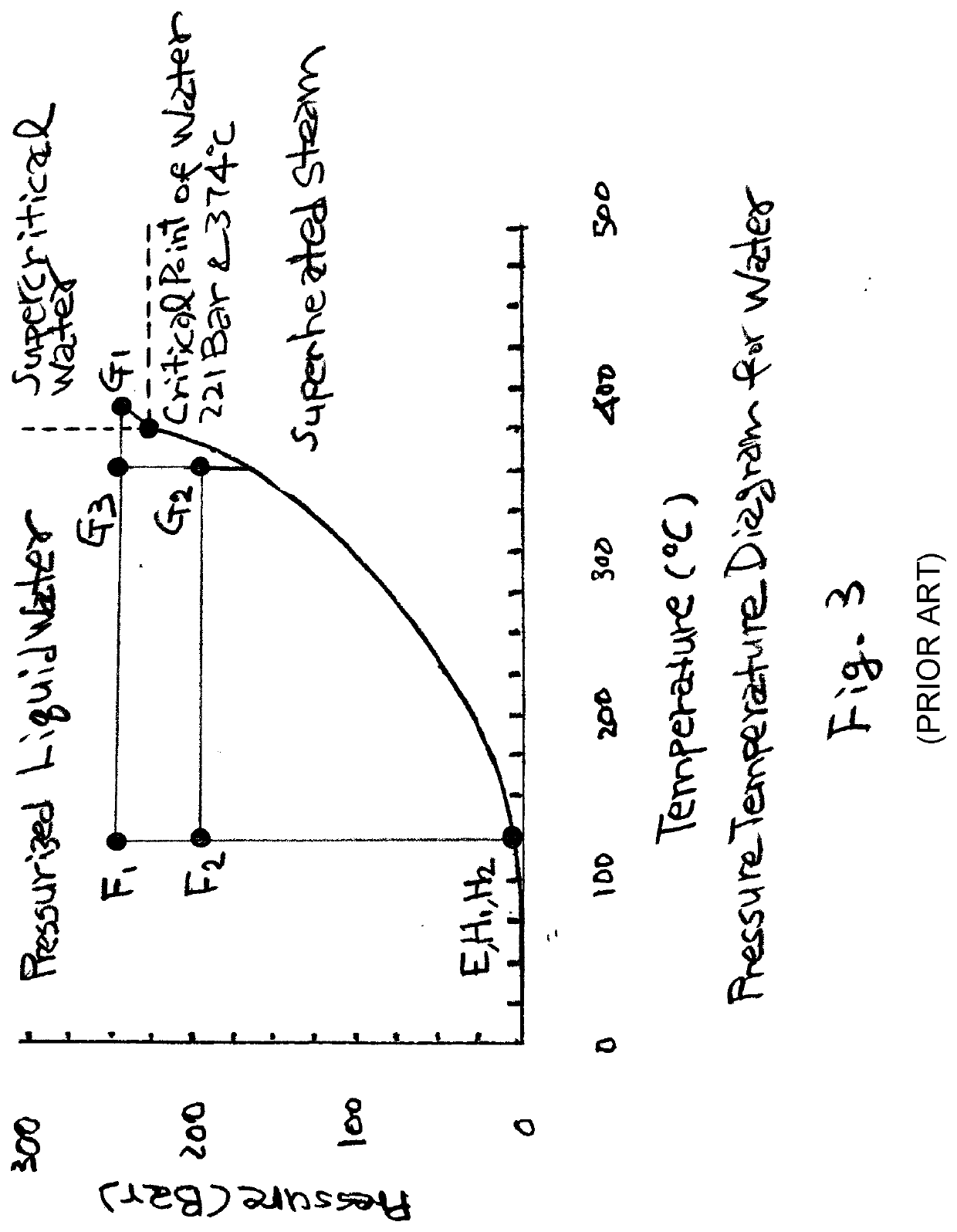Solar Desalination System
a desalination system and solar energy technology, applied in the direction of contaminated groundwater/leachate treatment, mechanical equipment, machines/engines, etc., can solve the problems of contaminated groundwater resources, affecting the operation of the system, and forming membrane fouling films, etc., to achieve the effect of controlling corrosion, smooth surface, and thinner surfa
- Summary
- Abstract
- Description
- Claims
- Application Information
AI Technical Summary
Benefits of technology
Problems solved by technology
Method used
Image
Examples
first embodiment
[0051]In a first embodiment, the schematic diagram of the solar desalination system 500 with isentropic expansion of SPF is shown in FIG. 5. In the daytime, the condensate water of the SPF is collected in condensate tank 505 at 130° C. and 2.7 bar, and then pumped to the pressure of 250 bar by pump 506. The pump discharge condensate water 551 is then heated to the temperature of 380° C. by a CSP unit 502 for stream 552. The SPF at 380° C. and 250 bar is used to run an expander 503 generating electricity and to operate the desalination unit 504. The condensate water of the SPF after desalination unit collects in condensate tank 505.
[0052]At the same time, the SPF at 380° C. and 250 bar with a volumetric heat content of 626.3 MJ / m3 is stored in SPF storage tank 501. For charging, valve 507 and valve 508 are opened with valve 509 and valve 510 closed. Valve 510 is opened when steam condensate is removed from the storage tank 501 and sent to condensate flash tank 516. Flash steam 563 an...
second embodiment
[0057]In a second embodiment, the schematic diagram of solar desalination system 600 with isenthalpic expansion of SPF is shown in FIG. 6. The difference between FIG. 5 and FIG. 6 is that the isentropic expander 503 is changed to an isenthalpic expanding valve 614 in FIG. 6. The components having reference numerals with the identical last two digits do the same function, respectively, as those in FIG. 5. In the daytime, the condensate water of the SPF is collected in condensate tank 605 at 130° C. and 2.7 bar, and then pumped to the pressure of 250 bar by pump 606. The pump discharge condensate water 651 is then heated to the temperature of 380° C. by a CSP unit 602 for stream 652. The SPF at 380° C. and 250 bar expands to the low pressure at 130° C. and 2.7 bar. The condensate formed during the isenthalpic expansion is sent to the condensate flash tank 616, and then flash steam 663 and steam condensate 664 are sent to the desalination unit for heat recovery. The low pressure steam ...
PUM
 Login to View More
Login to View More Abstract
Description
Claims
Application Information
 Login to View More
Login to View More - R&D
- Intellectual Property
- Life Sciences
- Materials
- Tech Scout
- Unparalleled Data Quality
- Higher Quality Content
- 60% Fewer Hallucinations
Browse by: Latest US Patents, China's latest patents, Technical Efficacy Thesaurus, Application Domain, Technology Topic, Popular Technical Reports.
© 2025 PatSnap. All rights reserved.Legal|Privacy policy|Modern Slavery Act Transparency Statement|Sitemap|About US| Contact US: help@patsnap.com



